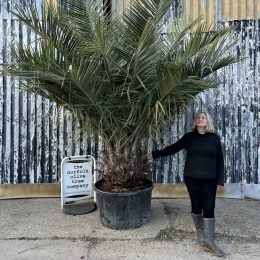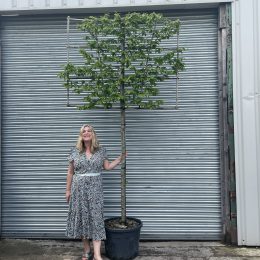Olive Tree Care: Answering Your Most Googled Questions
At The Norfolk Olive Tree Company, we believe that looking after an olive tree should feel joyful, not confusing. But even the most devoted plant lovers occasionally need guidance. Luckily, Google’s “People Also Ask” section gives us insight into the exact questions people are searching for right now. Keep reading…..
How often should I water my olive tree?
The frequency of watering depends on the age of the tree and whether it’s planted in the ground or in a pot. Young olive trees planted in the ground need deep watering two to three times a month during their first growing season to encourage strong root development. Do this only between March to October. Established trees, especially those planted in the ground, are incredibly drought tolerant and only need occasional watering—if they are looking dehydrated ( leaf drop is the first sign of dehydration)
For potted trees, soak well once or twice a week from March to October. In cooler months, October to March do not water as it is not necessary.
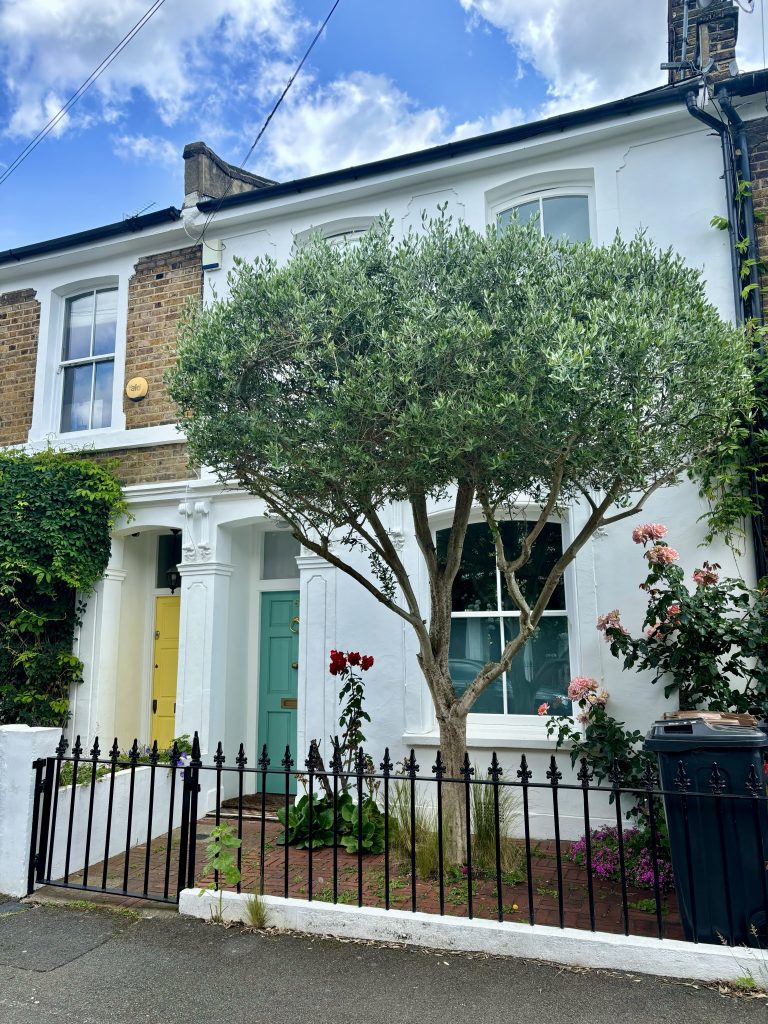
What type of soil and drainage do olive trees need?
Olive trees absolutely hate soggy roots. Good drainage is essential. The ideal soil is well-draining and sandy or loamy, with a neutral to slightly alkaline pH between 6.5 and 8.5. If your garden has heavy or clay-based soil, improve drainage by mixing in horticultural grit, coarse sand, or perlite. In containers, always use pots with drainage holes and avoid water-retaining compost. Add a layer of grit at the base for extra drainage security. We recommend John Innes No 3.
Should olive trees be planted in full sun?
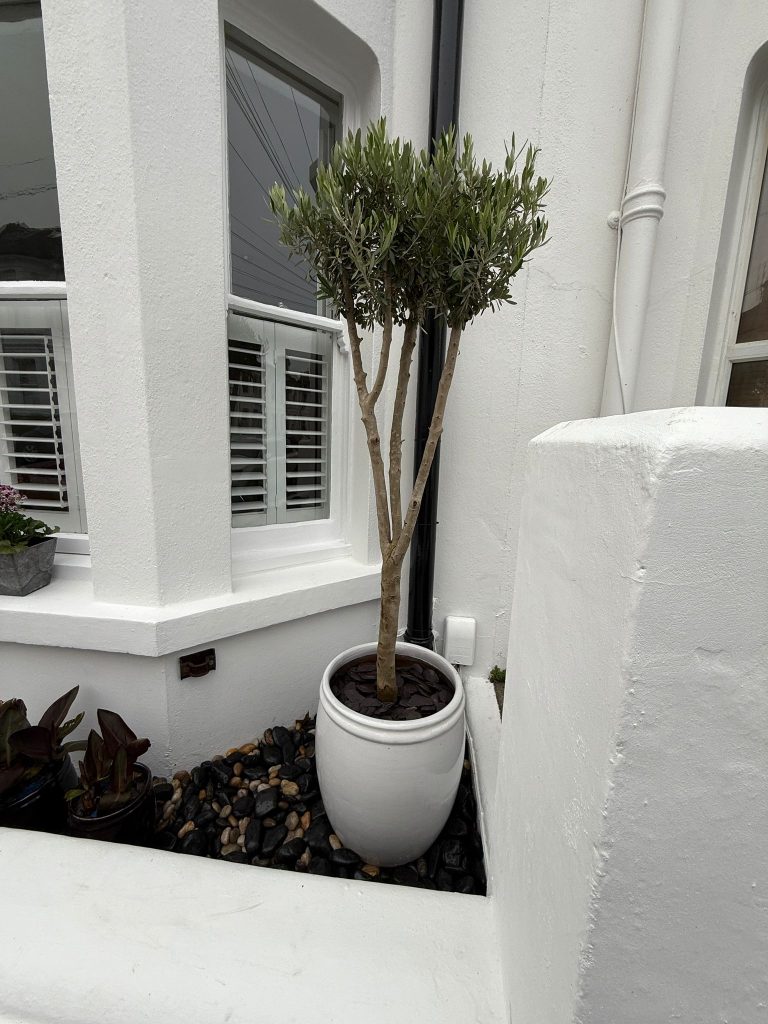
Olive trees love the sun. In fact, they need at least four to eight hours of good sunlight each day to remain healthy. Choose a sunny, sheltered position in your garden—preferably south-facing.
However Olive Trees in less sunny aspects such as a West or East facing garden will still thrive but they will not produce fruit.
For indoor trees, position them near the brightest window available, or consider using a grow light during darker months. Lack of sunlight can result in sparse foliage, leggy growth, and reduced resilience against pests and diseases.
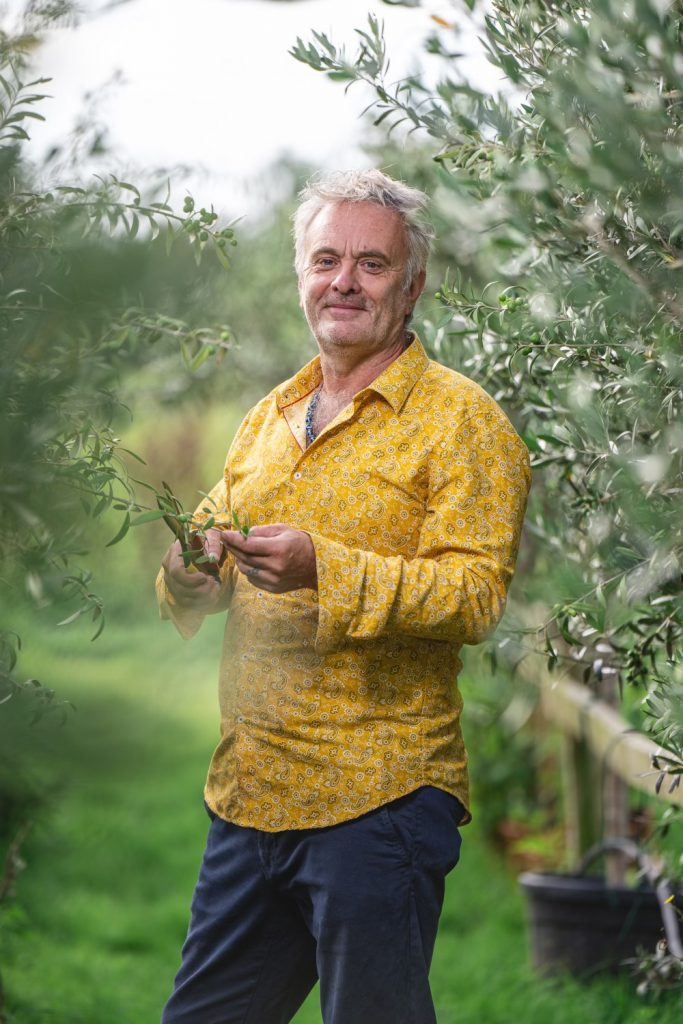
How do I prune my olive tree?
Pruning should be done once a year, ideally in late winter or early spring before new growth appears. Start by removing any dead, damaged, or diseased branches. Then thin out any crowded areas to allow light and air to reach the centre of the tree. This helps reduce the risk of pests and encourages new shoots. Light shaping can be done in early summer if needed. Avoid pruning in autumn, as new growth will be vulnerable to frost.
Can olive trees fruit in the UK?
Yes, olive trees can fruit in the UK, but they need the right conditions. Fruiting is most likely if your tree is planted in full sun, protected from wind, and well cared for. Olive trees aren’t all self-fertile, so you need to find a self- fertile variety such as Arbequina, Hojiblanca, or Leccino to produce fruit, but they do need a hot, dry summer to flower successfully. Pollination is usually wind-assisted, so outdoor placement is helpful. Potted trees may benefit from a gentle shake during flowering to help spread the pollen.
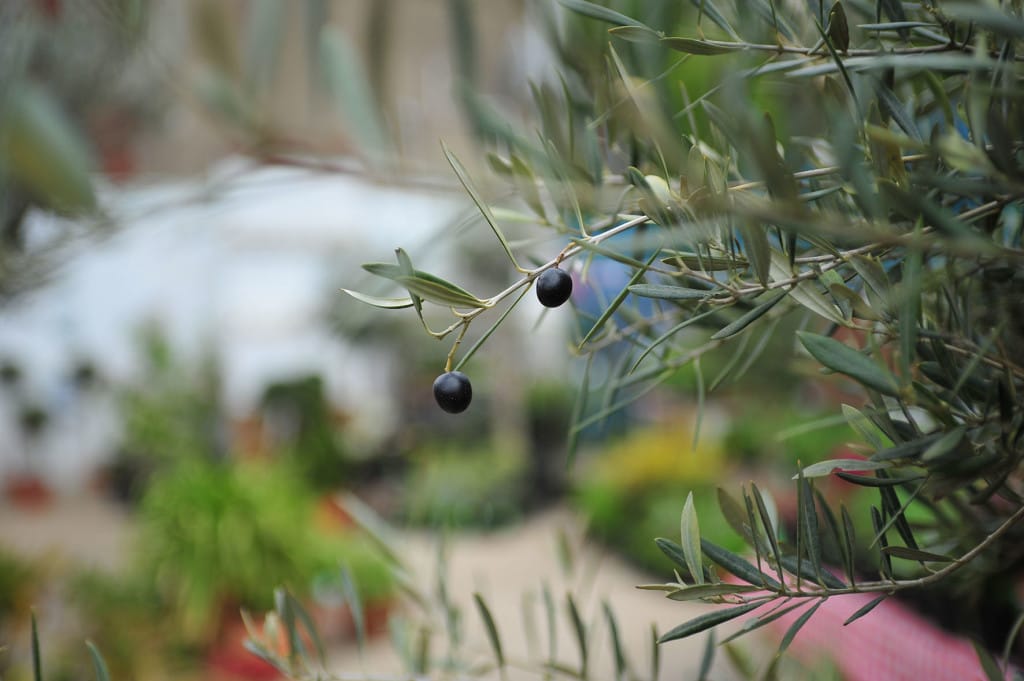
Why is my olive tree losing its leaves?
Leaf loss is usually a sign of stress. The most common causes include under-watering, lack of light, or sudden changes in temperature. If dry and crispy, your tree is dehydrated. Indoor olive trees are particularly sensitive to central heating and draughts. Ensure your tree is getting enough light and is not exposed to extreme fluctuations in temperature or watering routines.
Do olive trees need fertiliser?
Feeding your olive tree will help it maintain healthy foliage and promote strong growth. Apply a balanced, slow-release fertiliser in early spring and again in midsummer. Look for one that’s high in potassium and magnesium. If your tree is in a pot, it will need extra nutrients to compensate for limited soil. Apply a liquid seaweed feed every two weeks from April to September. Stop feeding in autumn and winter, when the tree naturally slows its growth.
How do I protect my olive tree in winter?
While olive trees are hardy to around –15°C, they can suffer from stress in prolonged frost, especially when young or container-grown. For potted trees, make sure the pot is lifted off the ground to prevent cold damage to the roots, and stop watering over winter to avoid root rot.
Olive Tree Care Made Simple
Caring for an olive tree doesn’t need to be complicated. With a little knowledge—and the right guidance from a trusted supplier—you can enjoy a healthy, thriving tree that adds beauty and character to your outdoor space all year round. Whether you’re growing your first olive tree or nurturing a mature one, it all starts with sunlight, good soil, proper watering, and seasonal TLC.
Discover Our Range of Hand-Picked Olive Trees
At The Norfolk Olive Tree Company, we don’t just sell olive trees—we grow lasting relationships with customers who care. Every tree is carefully selected, acclimatised, and ready to thrive in British gardens. Whether you’re looking for a compact container tree or a majestic ancient specimen, we’re here to help you choose, plant, and care for it.
Explore our collection today and bring home a tree that tells your story.
Quick Olive Tree Care Summary
Watering
Young olive trees in the ground should be watered deeply two to three times per month during the growing season to help establish strong roots. Once mature, established olive trees need far less water.
In a pot soak generously weekly March till October.
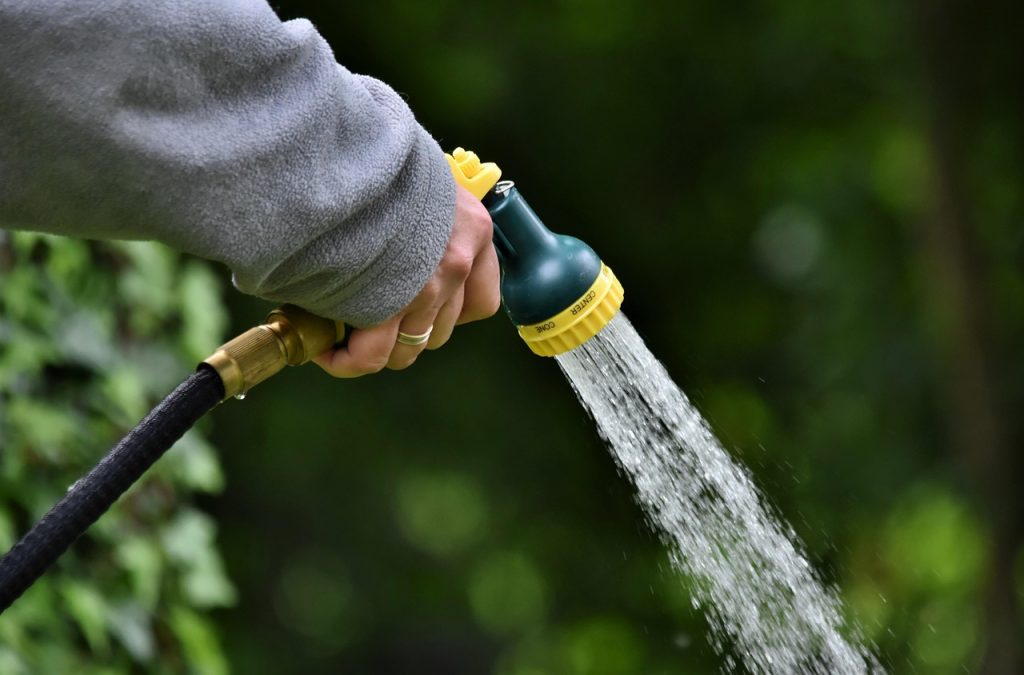
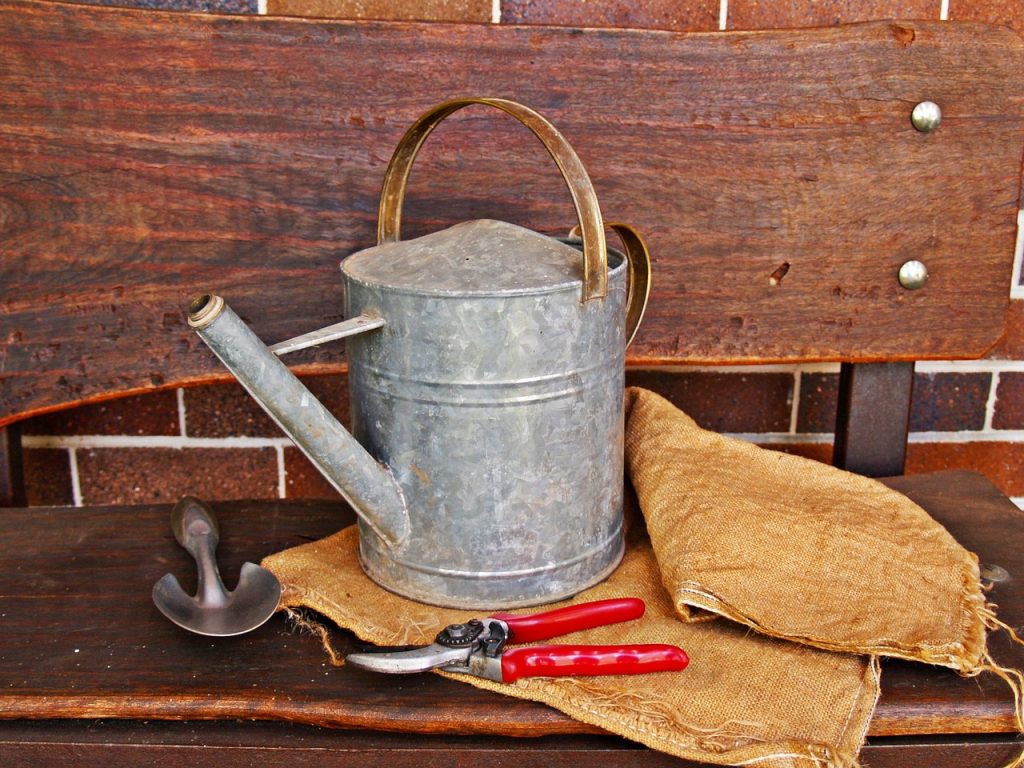
Soil and Drainage
Olive trees thrive in well-draining soil with a sandy or loamy texture. They prefer a neutral to slightly alkaline pH, ideally between 6.5 and 8.5. If you have heavy or clay-based soil, amend it with horticultural grit or coarse sand to improve drainage. For potted trees, always use containers with good drainage holes.
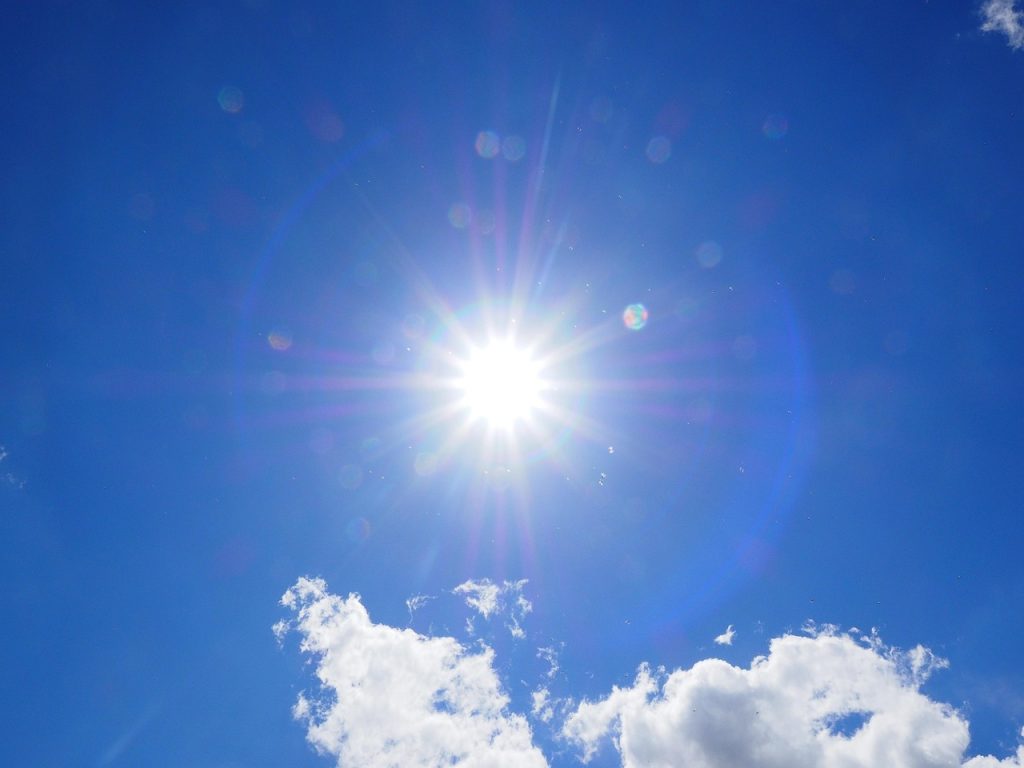
Sunlight
Outdoor trees benefit from a sunny position. If you’re growing one indoors, place it in the brightest spot possible—ideally by a large, south-facing window—or supplement with a full-spectrum grow light.
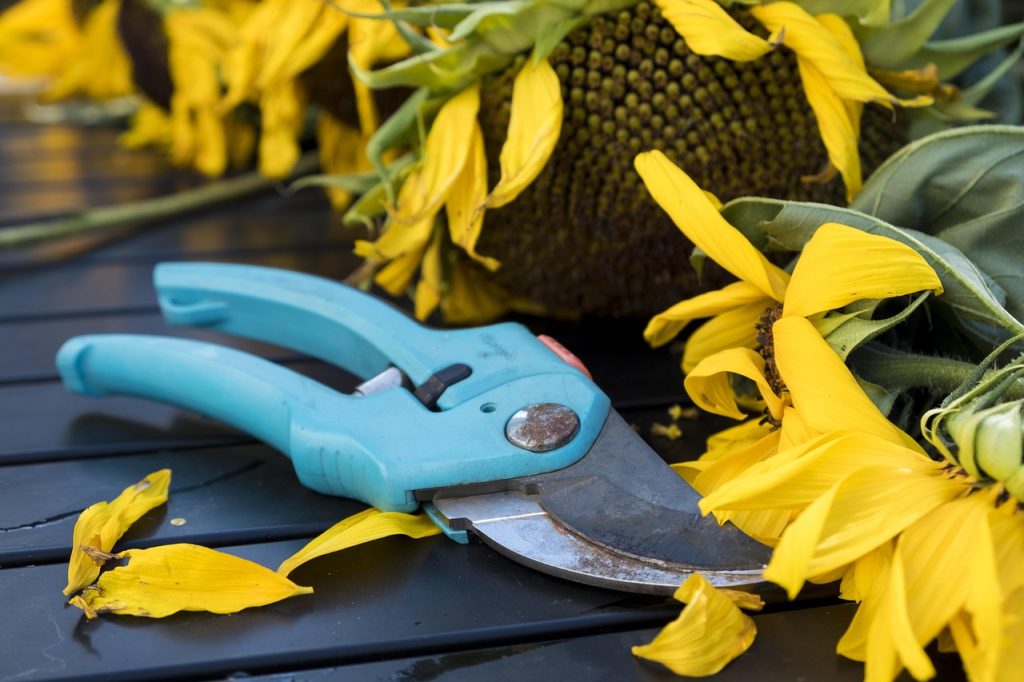
Pruning
Prune your olive tree once a year, typically in late winter or early spring, before new growth appears. Focus on removing any dead, damaged or crossing branches. Light pruning helps shape the tree, improve airflow, and promote healthy fruiting. Avoid heavy pruning in autumn or during cold spells.
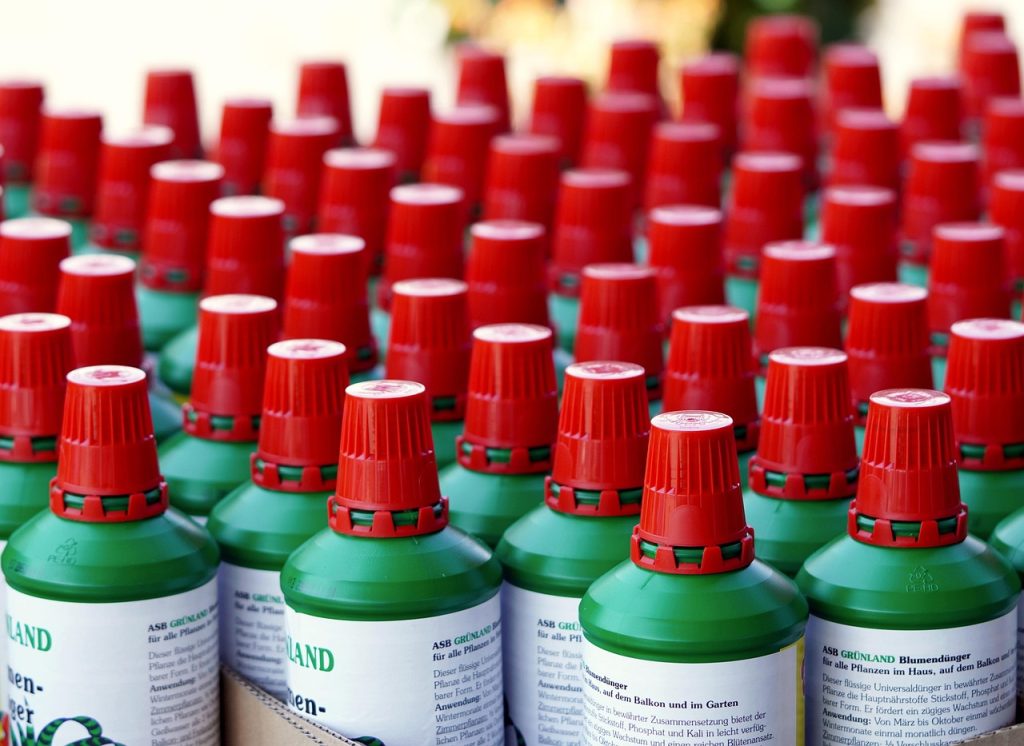
Feeding
While olive trees are low-maintenance, they benefit from a regular feed, slow-release fertiliser in early spring and again in midsummer. For potted trees, supplement with a liquid seaweed or tomato feed or olive-specific fertiliser every two weeks from April to September to encourage lush growth and potential fruiting.


